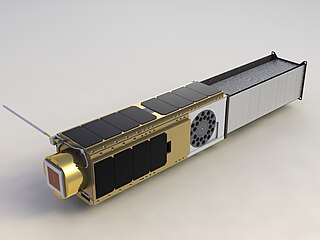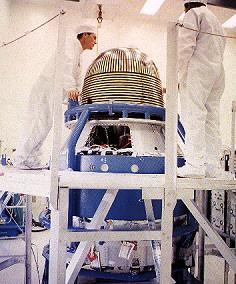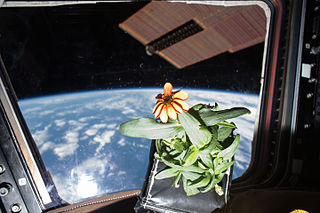
A reduced-gravity aircraft is a type of fixed-wing aircraft that provides brief near-weightless environments for training astronauts, conducting research, and making gravity-free movie shots.

Animals in space originally served to test the survivability of spaceflight, before human spaceflights were attempted. Later, many species were flown to investigate various biological processes and the effects microgravity and space flight might have on them. Bioastronautics is an area of bioengineering research that spans the study and support of life in space. To date, seven national space programs have flown non-human animals into space: the United States, Soviet Union, France, Argentina, China, Japan and Iran.

The effects of spaceflight on the human body are complex and largely harmful over both short and long term. Significant adverse effects of long-term weightlessness include muscle atrophy and deterioration of the skeleton. Other significant effects include a slowing of cardiovascular system functions, decreased production of red blood cells, balance disorders, eyesight disorders and changes in the immune system. Additional symptoms include fluid redistribution, loss of body mass, nasal congestion, sleep disturbance, and excess flatulence. A 2024 assessment noted that "well-known problems include bone loss, heightened cancer risk, vision impairment, weakened immune systems, and mental health issues... [y]et what’s going on at a molecular level hasn’t always been clear", arousing concerns especially vis a vis private and commercial spaceflight now occurring without any scientific or medical research being conducted among those populations regarding effects.

Kosmos 782 or Bion 3 was a Bion satellite. It carried 14 experiments prepared by seven countries in all, with participation from scientists in France, Czechoslovakia, Hungary, Poland, Romania, United States and the Soviet Union.

The Bion satellites, also named Biocosmos, is a series of Soviet biosatellites focused on space medicine.

Kosmos 1667, or Bion 7 was a 1985 biomedical research mission satellite involving scientists from nine countries. It was part of the Bion program. This mission was the scientific participation of nine countries.

Kosmos 1514 or Bion 6 was a biomedical research mission that was launched on 14 December 1983, at 07:00:00 UTC. It was part of the Bion programme.

A bio satellite is an artificial satellite designed to carry plants or animals in outer space. They are used to research the effects of space on biological matter while in orbit around a celestial body. The first satellite carrying an animal was Soviet Sputnik 2 on November 3, 1957. On August 20, 1960 Soviet Sputnik 5 launched and recovered dogs from Earth orbit.

Astrobotany is an applied sub-discipline of botany that is the study of plants in space environments. It is a branch of astrobiology and botany.

Weightlessness is the complete or near-complete absence of the sensation of weight, i.e., zero apparent weight. It is also termed zero g-force, or zero-g or, incorrectly, zero gravity.

The O/OREOS is a NASA automated CubeSat nanosatellite laboratory approximately the size of a loaf of bread that contains two separate astrobiology experiments on board. Developed by the Small Spacecraft Division at NASA Ames Research Center, the spacecraft was successfully launched as a secondary payload on STP-S26 led by the Space Test Program of the United States Air Force on a Minotaur IV launch vehicle from Kodiak Island, Alaska on 20 November 2010, at 01:25:00 UTC.

NASA's Biosatellite program was a series of three uncrewed artificial satellites to assess the effects of spaceflight, especially radiation and weightlessness, on living organisms. Each was designed to reenter Earth's atmosphere and be recovered at the end of its mission.

Space farming refers to the cultivation of crops for food and other materials in space or on off-Earth celestial objects – equivalent to agriculture on Moon.

The growth of plants in outer space has elicited much scientific interest. In the late 20th and early 21st century, plants were often taken into space in low Earth orbit to be grown in a weightless but pressurized controlled environment, sometimes called space gardens. In the context of human spaceflight, they can be consumed as food and provide a refreshing atmosphere. Plants can metabolize carbon dioxide in the air to produce valuable oxygen, and can help control cabin humidity. Growing plants in space may provide a psychological benefit to human spaceflight crews. Usually the plants were part of studies or technical development to further develop space gardens or conduct science experiments. To date plants taken into space have had mostly scientific interest, with only limited contributions to the functionality of the spacecraft, however the Apollo Moon tree project was more or less forestry inspired mission and the trees are part of a country's bicentennial celebration.

Exobiology Radiation Assembly (ERA) was an experiment that investigated the biological effects of space radiation. An astrobiology mission developed by the European Space Agency (ESA), it took place aboard the European Retrievable Carrier (EURECA), an unmanned 4.5 tonne satellite with a payload of 15 experiments.

BioSentinel is a lowcost CubeSat spacecraft on a astrobiology mission that will use budding yeast to detect, measure, and compare the impact of deep space radiation on DNA repair over long time beyond low Earth orbit.

Biosatellite 1, also known as Biosat 1 and Biosatellite A, was the first mission in NASA's Biosatellite program. It was launched on December 14, 1966, by a Delta G rocket from Launch Complex 17A of the Cape Canaveral Air Force Station into an orbit with a 296-kilometre (184 mi) perigee, 309-kilometre (192 mi) apogee, and 33.5 degrees of orbital inclination, with a period of 90.5 minutes.

Biosatellite 3, also known as Biosat 3 and Biosatellite D, was a third and final mission in the Biosatellite program. It was launched on a Delta-N rocket from Cape Canaveral Air Force Station on June 29, 1969,

On a July 9, 1946, suborbital V-2 rocket flight, fruit flies became the first living and sentient organisms to go to space, and on February 20, 1947, fruit flies safely returned from a suborbital space flight, which paved the way for human exploration. Years before sending mammals into space, such as the 1949 flight of the rhesus monkey Albert II, the Soviet space dogs, or humans, scientists studied Drosophila melanogaster and its reactions to both radiation and space flight to understand the possible effects of space and a zero-gravity environment on humans. Starting in the 1910s, researchers conducted experiments on fruit flies because humans and fruit flies share many genes.

The Environmental Research Satellite program was a series of small satellites initially operated by the United States Air Force Office of Aerospace Research. Designed to be launched "piggyback" to other satellites during launch, detaching once in orbit, they were the smallest satellites launched to date—what would today be classified as microsatellites. 33 ERS satellites in six different series were launched between 1962 and 1971, conducting scientific research and serving as test beds to investigate the reliability of new spacecraft components.



















